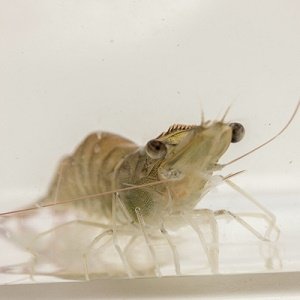
Fish and seafood stand out as crucial sources of high-quality lipids, particularly long-chain polyunsaturated fatty acids (PUFA) omega-3. As staple foods in diets worldwide, their consumption offers numerous health benefits.
However, seafood preparation and storage methods can significantly impact their lipid nutritional quality. In this regard, reducing the loss of omega-3 PUFA during food processing is equally important to enhance the availability of these fatty acids for consumers.
A study published by scientists from Beibu Gulf University, Guangdong Ocean University, and Universiti Malaysia Sabah aimed to shed light on the effects of food processing, specifically cooking and cold storage, on the lipid nutritional quality of fish and seafood.
Addressing the Information Gap
While there are reviews on the nutritional quality of lipids in raw seafood, there is a notable lack of consistency regarding the impact of food processing. The study aimed to close this gap by providing a critical review of the effects of cooking and cold storage on lipid profiles in fish and seafood. In doing so, it provides valuable information for consumers to make informed decisions about food preparation and storage methods aligned with their health goals.
Cooking Methods and Lipid Alterations
In many cultures, seafood is cooked to eliminate potential parasites and pathogens. However, the choice of cooking method plays a crucial role in preserving the lipid nutritional quality. Although there is no general agreement on the effects of cooking on the lipid content of fish and seafood, the study’s authors cite that some studies have shown cooking reduces the lipid content of fish and seafood, while others report cooking increases the total lipid content of aquatic origin foods.
However, the researchers found that baking and steaming emerge as the most recommended cooking methods for fish and seafood, respectively. These techniques not only improve palatability but also minimize alterations in the fatty acid profile.
On the contrary, the study authors strongly discourage frying seafood with margarine due to adverse effects on the lipid nutritional quality.
Cold Storage Extension and Shelf Life
The extension of the shelf life of seafood products is often achieved through cold storage. This process is crucial for maintaining product freshness and safety. The study highlights that the recommended storage periods for refrigeration and frozen storage are 3 days and 2 weeks, respectively.
Stay Always Informed
Join our communities to instantly receive the most important news, reports, and analysis from the aquaculture industry.
“A longer refrigeration storage period of 6 days can affect the EPA + DHA content without compromising the n3/n6 ratio and the PUFA/SFA ratio of seafood, while a longer freezing period of 3 weeks can affect the PUFA/SFA ratio of seafood without causing negative effects on the EPA + DHA content and n3/n6 ratio,” concluded the study authors.
In this sense, different refrigeration or freezing periods than those mentioned increase the risk of compromising the lipid nutritional quality of fish and seafood. This information is essential for consumers seeking to optimize the health benefits of omega-3 PUFA in their seafood products.
Conclusion
In conclusion, understanding the influence of cooking and cold storage on the nutritional quality of fish and seafood lipids is crucial for health-conscious consumers. Baking and steaming are the preferred cooking methods, although caution is advised regarding the duration of cold storage for fish and seafood.
“Overall, frying has the greatest impact on lipid content, EPA and DHA, the n3/n6 ratio, and the PUFA/SFA ratio of seafood, and frying with margarine has the worst impact on the overall nutritional quality of seafood lipids,” conclude the researchers.
They also recommend, from the perspective of lipid nutritional quality, the most recommended cooking methods for fish and seafood are baking and steaming, followed by boiling, grilling, and microwave cooking.
In terms of cold storage, the researchers conclude that the optimal short-term refrigeration storage period and the longest freezing storage period are 3 days and 2 weeks, respectively.
Armed with this knowledge, individuals can make informed decisions to preserve the goodness of omega-3 PUFA in their seafood, promoting both taste and health benefits.
The study was funded by the National Natural Science Foundation of China, Key Research Base of Humanities and Social Sciences in Guangxi Universities “Beibu Gulf Ocean Development Research Center,” and the High-level Talents Scientific Research Start-Up Fund Project of Beibu Gulf University.
Reference (open access)
Karsoon Tan, Leongseng Lim, Ya Peng, Kit-Leong Cheong. 2023. Effects of food processing on the lipid nutritional quality of commercially important fish and shellfish, Food Chemistry: X, Volume 20, 2023, 101034, ISSN 2590-1575, https://doi.org/10.1016/j.fochx.2023.101034.
Editor at the digital magazine AquaHoy. He holds a degree in Aquaculture Biology from the National University of Santa (UNS) and a Master’s degree in Science and Innovation Management from the Polytechnic University of Valencia, with postgraduate diplomas in Business Innovation and Innovation Management. He possesses extensive experience in the aquaculture and fisheries sector, having led the Fisheries Innovation Unit of the National Program for Innovation in Fisheries and Aquaculture (PNIPA). He has served as a senior consultant in technology watch, an innovation project formulator and advisor, and a lecturer at UNS. He is a member of the Peruvian College of Biologists and was recognized by the World Aquaculture Society (WAS) in 2016 for his contribution to aquaculture.




